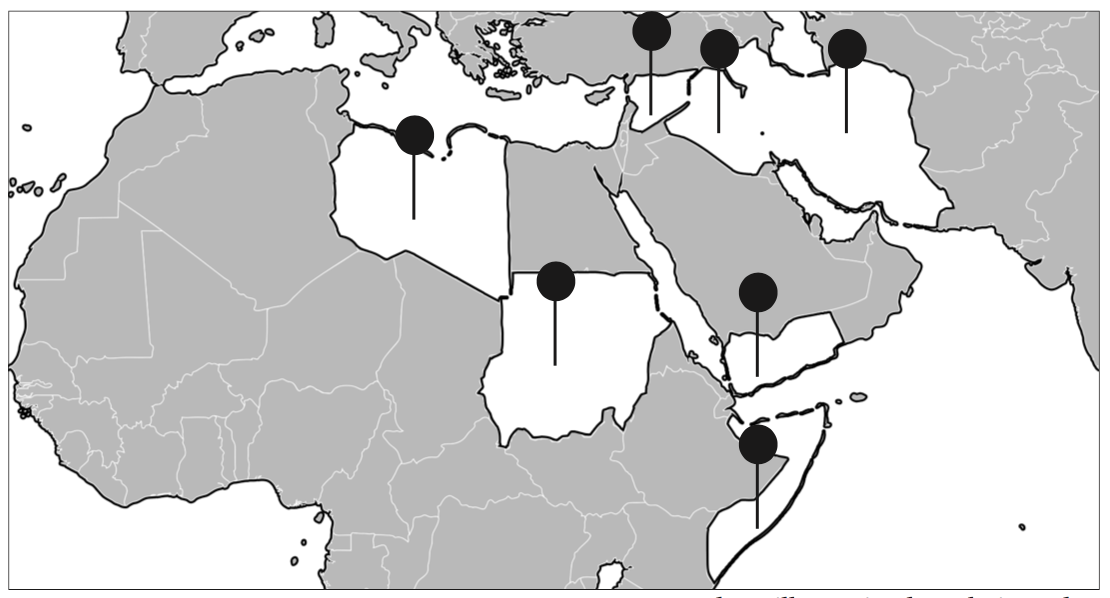“I hereby proclaim that the entry of nationals of Syria as refugees is detrimental to the interests of the United States and thus suspend any such entry until such time as I have determined that sufficient changes have been made to the USRAP to ensure that admission of Syrian refugees is consistent with the national interest.”
This is an excerpt from President Donald Trump’s executive order entitled “Protecting the Nation from Foreign Terrorist Entry to the United States.” This piece of legislature is the signature action taken by the new regime since the inauguration three and a half weeks ago, and it is surly its most controversial.
Since the roll-out of this executive order, it has sparked protests around the United States and has been defended and attacked in almost every way conceivable. This bill stops people from 7 countries with a Muslim majority, from entering the United States for 120 days (with the exception of refuges from Syria who are banned indefinably) until the administration thinks up a way to better vet the people coming in: extreme vetting, to use the president’s words. But what does that entail, and what does that actually even mean?
Perhaps it is best if we start with what we have now. What does a typical refugee go through in order to relocate to the United States, or any country for that matter? As it turns out, it is an intense process.
The first step to relocation is obtaining legal refugee status, and to do this, a person who has left their country for a well-founded reason (whether that is political persecution, civil war, fear for their lives, etc.) must register with the United Nations. This process involves paperwork filed with the United Nations, a lengthy interview process, refugee status actually getting granted, and finally a referral for resettlement. Interestingly, of all of those who fit the qualifications of a refugee, only the most vulnerable are referred for relocation, and less than one percent are referred worldwide. It is also important to remember that, according to the International Rescue Community, the United Nations chooses the relocation country.
Assuming a refugee can get through this process (and the vast majority do not), the refugee will move on in the process, beginning with an interview for the state department. After this interview, a first and a second background check are run on the potential refugee, which will cross reference them with the known law enforcement and terrorist databases. A third background check is often implemented, followed by three separate fingerprint screenings. The fingerprints are then checked against FBI and Homeland Security databases to cross reference against watch lists and past immigration attempts.
In addition to all of the previous steps, Syrian refugees’ cases are reviewed by the US immigration headquarters and are often referred for additional review.
The final phase starts with an extensive, in-person interview with a Homeland Security officer, and Homeland Security is required to move beyond this point. Refugees are then screened for contagious diseases, participate in cultural orientation classes, go through a matching process, and go through one additional security check because it can take so long for refugees to make it through this whole process.
All of this must occur before a refugee steps one foot on American soil.
It is important to mention again that any of the agencies involved can deny a refugee’s request at any point in this 20-step process and, this program can take years to finish.
For me, this begs the question: what is extreme vetting? Is it a fourth background check? A fourth fingerprint screening? Checking their ability to shotgun a Budweiser while singing the national anthem?
We vet refugees, and we vet effectively. We have for a long time. So what is the purpose of this order? This bill falls in line with what I believe the Trump campaign has done best of all in this election cycle, which is to create a fake problem for the Trump administration to solve in order to make regular Americans feel better about their own personal safety. And the facts back this up.
According to CNN, zero refugees from the countries included in the executive order have killed anyone in terrorist attacks on American soil. Seventeen people from the countries have been convicted of attempting or participating in a terrorist attack over the past 40 years. Additionally, 9 people a year are killed by Muslim extremists in the US since 9/11, while in the meantime 12,843 people are killed by firearms a year and 37,000 people die in traffic accidents every year.
Terrorism exists, both domestically and abroad. That is fact, and it is important for us to be careful with the people that we let into the country. It is more than naive to believe that there are not people in the world who want to do America harm.
But we are careful with this group of people. We put them through a multi-year vetting process through the United Nations and multiple levels US government agencies. We perform three separate background checks and additional fingerprint scans in order to ensure the safety of the citizens of the United States. This process has worked, and will continue to work if allowed to do so, and I can find no reason for this ban to be in place.
If we are looking for a scapegoat as to why we are so afraid these days, I suggest looking elsewhere.

